Hi Gents,
today we look at a Pilot Badge of the Luftwaffe. That’s not the first one I have in my blog. Sebastien Talbot did an article about the Imme Pilot badge on the February 2nd 2018.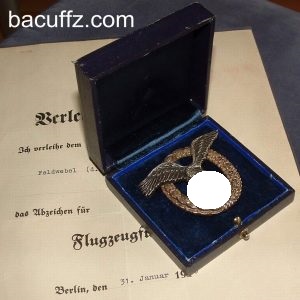
This time we focus on the pilot badge from a good collector friend who is also known expert on Luftwaffe Badges in the collector community.
Interesting fact is that after all the years of collecting and studying badges of the Luftwaffe we have no idea who really made this badge. There are lots of theory`s but no hard evidence to underline the makers company.
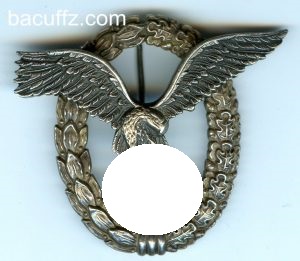
You might have seen it; we talk about the marker OM. In this case the badge I like to introduce to you is from the estate of Oberleutnant Wilhelm Beier.
Wilhelm Beier was a Knights Cross holder who fought at the Night fighter front over England during World War II.
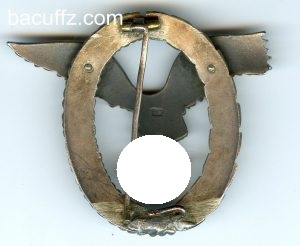
He achieved a total of 38 “night” victories and served with 3./NJG 2, 7./NJG 2, 9./NJG 2, 10./NJG 1 and 3./NJG. The tail of his Junker Ju 88 C-6 features 37 “Abschussbalken” which is a really high number. At the end of the War Beier retrained on the Me262.
Back to the Pilots Badge, here some historic information:
The pilot’s qualification badge was originally introduced on January 19th, 1935 for award to personnel of the DLV, “Deutscher Luftsportsverband Fliegerschaft”, (German Air Sports Association, Pilot Base), the secret forerunner of the Luftwaffe, who achieved their pilot’s license. The badge was officially adopted by the Luftwaffe on March 26th, 1936, by order of Hermann Göring. The pilot’s badge was awarded on an individual basis to personnel who had successfully completed the appropriate theory and flight training and had achieved their military pilot’s license. As with other flyer’s specialty badges a cloth version of the pilot’s badge was authorized for wear on the flight blouse with a machine embroidered pattern for EM/NCO’s and a hand embroidered pattern for Officers.
Oberleutnant Beier got his Pilot Badge in 1940 (you can see the date on the document) and as far as we know he has worn it until the end of the war. That’s the reason why it is in a “been there” condition. For him it was like a Talisman, that way he always came back from his front duty.
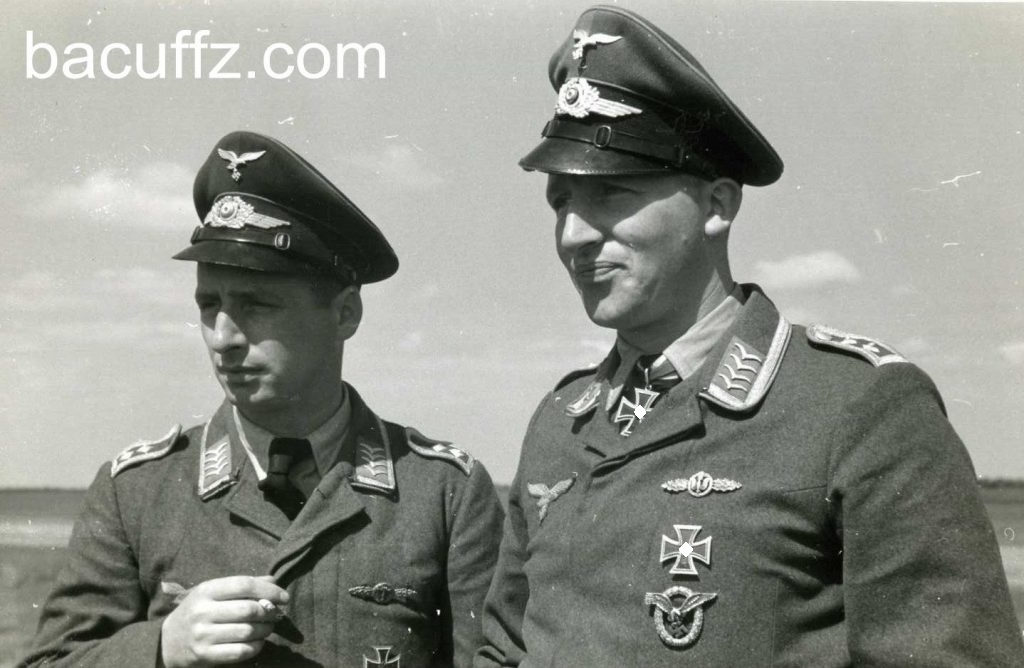
Medals and Awards of Wilhelm Beier
Pilot Badge (OM)
Clasp for Fighter in Silver
Iron Cross 2nd Class 1939
Iron Cross 1st Class 1939
Ehrenpokal of the Luftwaffe
Knights Cross of the Iron Cross 1939
He received his Knights Cross after 14 Kills with his Ju 88 C-6 October 10th 1941. More about his combat plane will follow:
The Ju 88C was originally intended as a fighter-bomber and heavy fighter by adding fixed, forward-firing guns to the nose while retaining some bomb carrying ability of the A-series bomber. The C-series had a solid metal nose, typically housing one 20 mm MG FF cannon and three 7.92 mm (.312 in) MG 17 machine guns. The aircraft retained the ventral Bola gondola under the crew compartment though individual units sometimes removed this to reduce weight and drag to enhance performance. The Ju-88C was later used as a night fighter, and this became its main role.
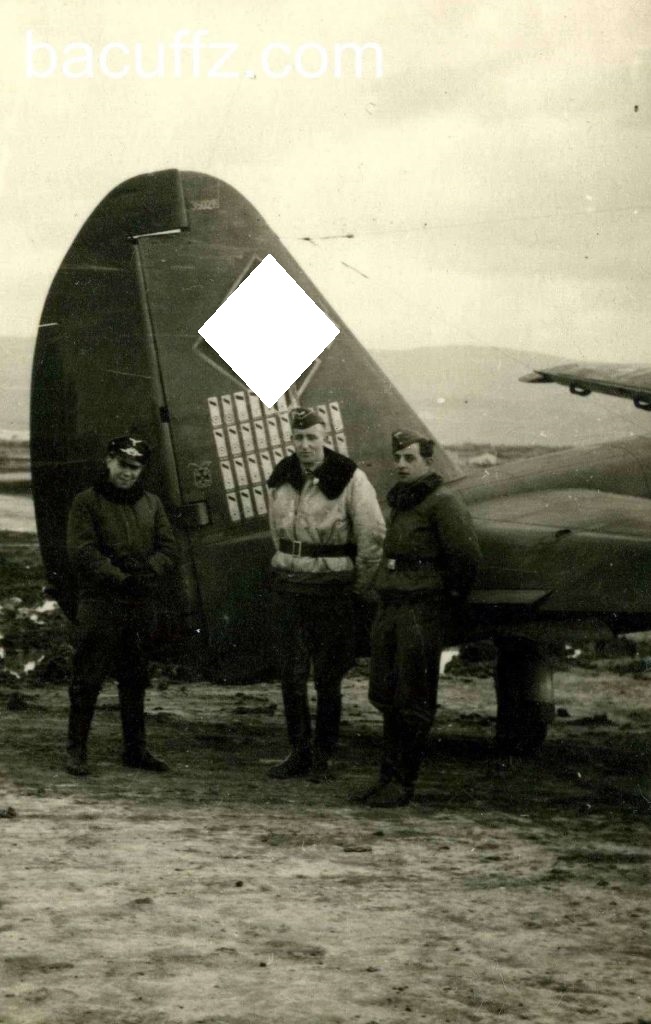
The first version of the Ju 88C was the C-1 with 20 aircraft converted from A-1 airframes. Some of them entered service in the Zerstörerstaffel of KG 30 which became part of II./NJG 1 in July 1940. The C-1 was followed by the C-2 of which 20 aircraft were converted from A-5 airframes with enlarged wingspan. The C-4 became the first production version with 60 produced and 60 converted from A-5 airframes. The C-6, of which 900 aircraft were produced, was based on the A-4 airframe with more powerful engines and stronger defensive armament (single- or dual-mount belt-fed 7.92 mm MG 81 or 13 mm MG 131 instead of drum-fed MG 15 machine guns).
The C-6 as night fighter was typically equipped with FuG 202 Lichtenstein BC low-UHF band airborne intercept radar, using the complex 32-dipole Matratze antennas. The first four C-6 night fighters were tested in early 1942 by NJG 2. The trials were successful and the aircraft was ordered into production. In October 1943, many C-6s were upgraded with new radar systems. The first new radar equipment was the FuG 212 Lichtenstein C-1. After the UHF-band Lichtenstein radars had been compromised to the Allies in the late spring of 1943, the next development in German AI radar was the VHF-band FuG 220 Lichtenstein SN-2, discarding the 32-dipole Matratze antennae for the much larger eight-dipole Hirschgeweih (stag’s antlers) aerials, required for the longer wavelength SN-2 system.
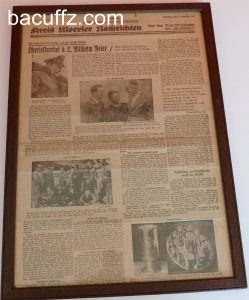
Many Ju-88C’s had their Bola gondolas modified to hold up to two forward firing 20 mm cannon. Several C-6 night fighters were equipped with two „Schräge-Musik“ upward-firing 20mm cannon in trial fittings, and from mid 1943 onward, there was an official field modification kit available for this arrangement.
A small number of the C-series day fighters had their new solid-metal noses specially painted to resemble the bomber A-series‘ „beetle’s eye“ faceted clear view nose glazing, in an attempt to deceive Allied pilots into thinking the fighters were actually bombers; the unusual „camouflage“ attempt did result initially in a number of Allied aerial losses.
The Ju 88 is not a plane with lots of space for the crew, so we think that he one day in the plane hooked behind something and the catch broke of. They fixed it “in the field”. Not so nice like an expert would do it but it was good enough.
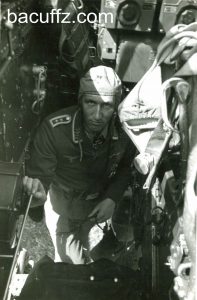
The badge has the marker OM on the backside. Some collectors doubt the fact that these badges are original but in fact the picture from Beier with all his Medals made one thing clear. The Badge on his Flight Blouse is the OM Pilot Badge.
Some collectors think that the OM Marker stands Otto Meybauer who was the Brother of Paul Meybauer. Paul Meybauer badges are know and accepted in the collector community. But there is no hard evidence that Otto Meybauer made the OM Badges.
Maybe somebody will soon find out what the mystery behind that was.
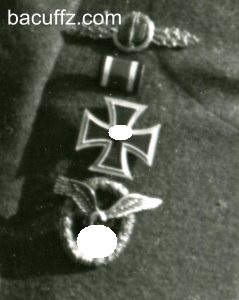
Sadly there is no chance to ask one of THE night fighter experts Tim Calvert, he passed away short time ago. So may he Rest in Peace, we will not forget him.
If you have additional information on OM Badges or pictures, Paperwork or anything related to that, please feel free to contact me and I will bring it on.
Thanks for reading, please help the blog to get more readers and more writers……Let the other collectors know what you can find here.
Take care
Best
Sascha